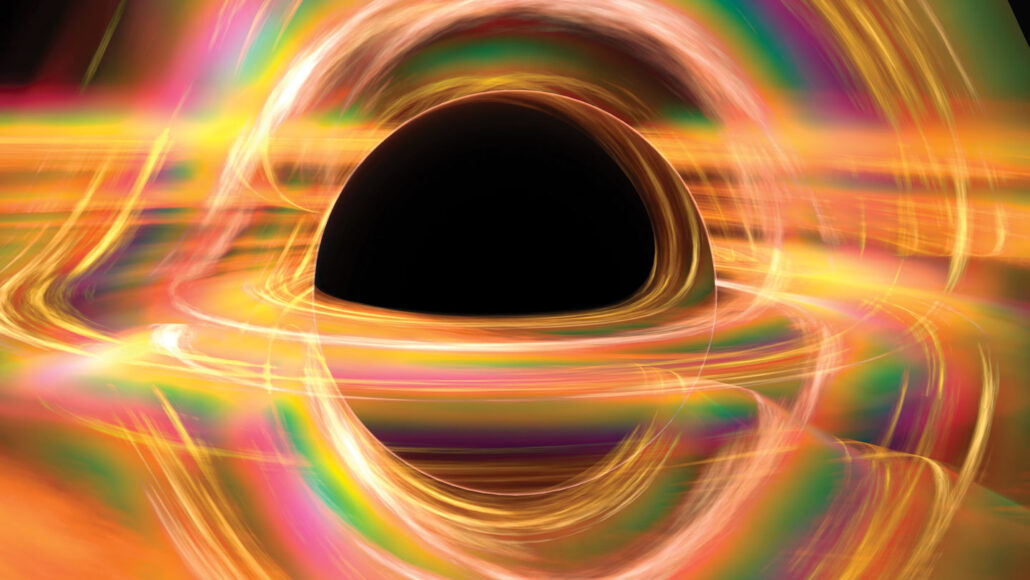Questions for ‘Weird black holes may reveal secrets of the early universe’

Big black holes may not always sit in the hearts of massive galaxies. Recent observations (and computer models) suggest that some are found at the centers of dwarf galaxies.
Alfred Pasieka/Science Photo Library/Getty Images Plus
To accompany ‘Weird black holes may reveal secrets of the early universe‘
SCIENCE
Before Reading:
- Describe what comes to mind when you think of a “black hole” in astronomy. How do black holes affect objects around them? (If you don’t know, please do a quick internet search.) Based on the effect black holes have on surrounding mass, do you predict the mass of a typical black hole will increase, decrease or remain the same over time? Explain your answer.
- Imagine entering a kitchen after a rogue toddler has wrecked the place. An open ice cream container sits on the counter. The freezer door hangs open, and everything inside is at room temperature. A spoon — sticky with old, melted ice cream — rests beside an empty sugar bag and a mounded pyramid of sugar crystals. You didn’t see the shenanigans that took place. But you think you can piece together what happened and when. Do you think this happened recently — such as within the last 10 minutes — or earlier? What clues helped you make this determination? Consider the three affected areas — freezer, ice cream and sugar pyramid. What happened first, second and last? Now imagine you are an astronomer trying to figure out what happened in our solar system’s history by observing the solar system in its current state. In what way is the puzzle of figuring out our solar system’s history similar to the puzzle of the wrecked kitchen?
During Reading:
- Approximately how many suns would equal the mass of the black hole at the center of our galaxy?
- According to our current understanding, what happened between “baby galaxies” that caused black holes at their cores to grow? If this scenario were true, how much mass should a black hole at the center of a galaxy have relative to its parent galaxy?
- How do scientists believe “dwarf galaxies” managed to stay so small? If that assumption is correct, would astronomers expect a black hole in the center of a “dwarf galaxy” to be bigger, smaller or equal to one in a more typical galaxy?
- What did astronomer Amy Reines see through her telescope that signaled the presence of a huge black hole? Why did the presence of a black hole in this galaxy surprise her?
- Approximately how many dwarf galaxies did Reines wind up scanning? Of those, how many seemed to harbor big black holes?
- Describe the two “ideas” for how the first black holes might have formed. How would any resulting black holes be expected to differ?
- In what U.S. state is the Very Large Array of radio telescopes located?
- How do black holes dubbed “wanderers” differ from typical black holes?
- If “wanderers” turn out to be rare in dwarf galaxies, what does that suggest about the origin of the earliest black holes?
- List two future observatories that may aid in the hunt for black holes.
After Reading:
- Astronomers often make an educated guess — called a hypothesis — about what might have happened in our universe’s distant past. These scientists then use evidence and data to support or reject their hypothesis. What is an example from this story of astronomers developing a hypothesis? How did those astronomers use evidence to support or reject this hypothesis? Was this hypothesis mostly supported by evidence or mostly rejected? Explain your answer.
- What happened at a meeting of scientists that inspired Reines to follow up on her intriguing findings regarding dwarf galaxies? Why do you think Reines had not followed up on these findings earlier? What does this story tell us about the value of communication in science?